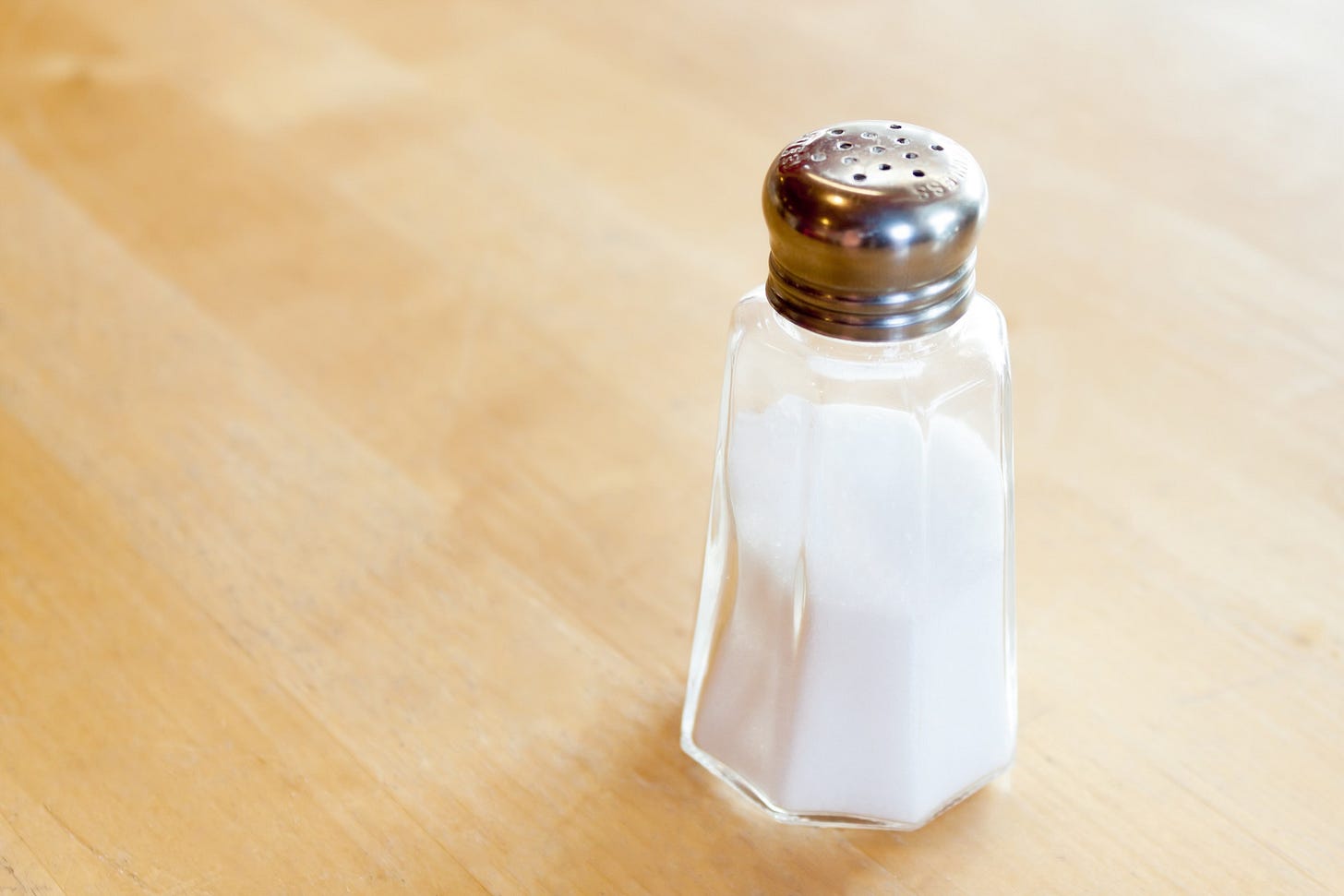Salt: Flavor, Function, and Facts
Is Salt Okay for Babies and Toddlers?
Salt is one of the most essential ingredients in cooking. Salt enhances flavor, balances taste, and plays a critical role in our body’s functions. But for parents feeding young children, salt can sometimes feel like a confusing topic. How much is too much? Is table salt different from kosher salt? Should babies have salt at all? Let’s dive into the science of salt, its role in home cooking, and how it fits into your child’s diet.
Salt: A Key to Flavor
Salt is one of the five basic tastes - sweet, sour, bitter, and umami. Unlike other seasonings, which add their own distinct flavor, salt enhances the natural flavors of food. Salt suppresses bitterness, balances sweetness, and can bring out umami in dishes. This is why a pinch of salt in cookie dough makes the chocolate taste richer, and unsalted soup often tastes bland.
In home cooking, using salt correctly makes the difference between a dish that is just okay and a deeply satisfying one. When used in the right amount, salt makes vegetables taste sweeter, meats more savory, and grains more complex. But not all salt is created equal.
Table Salt vs. Kosher Salt: Does It Matter?
If you have ever followed a recipe and wondered whether it really matters which type of salt you use, the answer is yes! Here’s why:
Table Salt: The fine grains dissolve quickly, making it ideal for baking or seasoning dishes where even distribution is key. Most table salt also contains iodine, which helps prevent iodine deficiency, a condition that can affect thyroid function.
Kosher Salt: With its larger, coarser flakes, kosher salt is easier to pinch and control when seasoning by hand. It also dissolves gradually, making it a favorite among chefs for seasoning meats, vegetables, and pasta water. Unlike table salt, most kosher salt does not contain iodine.
If a recipe calls for kosher salt and you substitute table salt, you will need to use less. Use about half the amount since table salt is denser.
Salt in Home Cooking vs. Processed Foods
There is a big difference between the salt we add to home-cooked meals and the salt found in processed foods. While home cooks typically use salt to enhance the natural flavors of food, processed foods rely on excessive amounts of sodium for preservation, texture, and flavor enhancement.
For example, a homemade soup seasoned with a pinch of salt will contain far less sodium than a canned soup. Canned soup may have hundreds of milligrams per serving. The same goes for homemade bread versus store-bought bread or fresh roasted chicken versus frozen chicken nuggets.
Teaching your child to enjoy home-cooked meals helps your child develop a taste for natural flavors rather than the ultra-salty processed versions.
Is Salt Okay for Babies and Toddlers?
One of the most common concerns parents have is whether babies and toddlers can have salt. The general recommendation is:
Babies under 12 months: Babies’ kidneys are still developing, so added salt should be limited. Breast milk or formula provides all the sodium a baby needs, and naturally occurring sodium in whole foods (like vegetables, dairy, and meats) is usually enough. Avoid processed foods high in sodium, such as crackers, deli meats, and canned soups.
Toddlers (1-3 years): A little added salt in home-cooked meals is fine. The recommended daily sodium intake for toddlers is less than 1200 mg. Instead of stressing over small amounts of salt in home cooking, focus on reducing ultra-processed foods. Ultra-processed foods are the real source of excessive sodium.
Common Misconception: "Salt is Bad for Kids"
Many parents believe children should avoid salt altogether, but sodium is an essential nutrient. Salt helps regulate fluid balance, nerve function, and muscle contractions. The key is moderation and choosing the right sources of salt, seasoning home-cooked meals instead of relying on processed foods.
Fun Salt Facts You May Not Know
Salt enhances sweetness: A sprinkle of salt on watermelon or dark chocolate makes it taste even better.
Some salts are naturally pink or black: Himalayan pink salt gets its color from trace minerals, while black salt (kala namak) has a sulfuric, egg-like aroma and is used in South Asian cuisine.
Sea salt is not necessarily “healthier”. While sea salt may contain trace minerals, the sodium content is essentially the same as table salt.
Final Takeaway: Salt is an essential part of cooking and nutrition. When used thoughtfully in home cooking, salt enhances flavor without the excessive sodium levels found in processed foods. Babies under one should have minimal added salt, but toddlers and older children can enjoy lightly salted home-cooked meals as part of a balanced diet.
The key is to focus on whole, fresh foods. Use salt as a tool to bring out the best in every meal.


